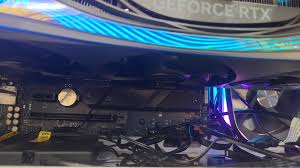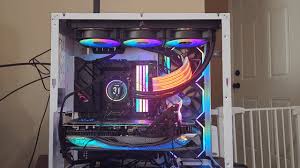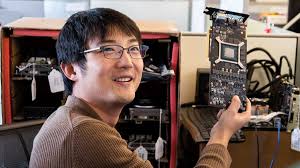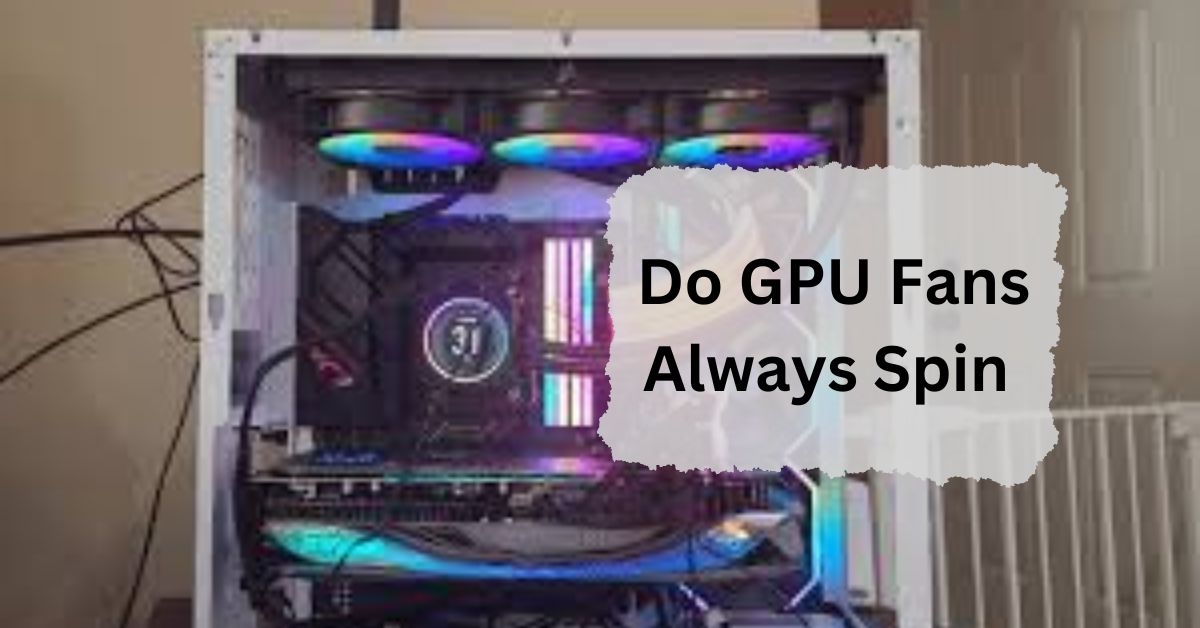Graphics Processing Units (GPUs) are the powerhouse behind every stunning visual in modern computing. From high-end gaming to 3D rendering, these devices are crucial for performance. But with great power comes the need for effective cooling. A common question that arises is: Do GPU fans always spin?
No, GPU fans do not always spin. They usually start spinning when the GPU temperature rises above a certain level, typically during heavy use. At lower temperatures or when idle, the fans may stop to reduce noise.
In this article, we will discuss “Do GPU Fans Always Spin”.
Table of Contents
Understanding GPU Cooling Systems:
Before diving into whether GPU fans always spin, it’s important to grasp how these cooling systems work. GPU fans are a critical part of the cooling mechanism, designed to keep the GPU at a stable temperature during use.
When the GPU is under heavy load, like during gaming or complex rendering tasks, it generates heat. The fans help dissipate this heat by moving air across the GPU’s heatsink.
There are two primary types of cooling in GPUs: active and passive. Active cooling involves fans or liquid cooling, while passive cooling relies on heat sinks without fans. Most modern GPUs utilize active cooling due to the high amount of heat generated.
When Do GPU Fans Spin?

GPU fans don’t always spin. Instead, they are typically controlled by a system known as temperature-based fan activation. This means that the fans will only start spinning once the GPU reaches a certain temperature threshold.
When the GPU is idle or performing light tasks, the fans may remain off because the temperature is low enough that active cooling isn’t required.
The fan curve plays a significant role here. A fan curve is a predefined setting that dictates when and how fast the fans should spin based on the GPU’s temperature. As the temperature increases, the fans will gradually spin faster to cool the GPU down.
Why GPU Fans Don’t Always Spin?
There are several reasons why GPU fans don’t spin all the time:
1. Silent Operation and Power Efficiency:
Many modern GPUs are designed to remain as quiet as possible during low-intensity tasks. By keeping the fans off when not needed, manufacturers can reduce noise and power consumption.
2. Manufacturer’s Design Choices:
Some GPUs are designed with fanless operation in mind for light usage scenarios. This is especially common in models with efficient cooling solutions that can handle low temperatures passively.
3. Fanless Mode in Modern GPUs:
Some GPUs have a feature where the fans remain off until the temperature exceeds a certain point, known as a fanless mode. This is part of the GPU’s energy-saving features.
Adjusting GPU Fan Settings:
If you prefer more control over your GPU’s cooling, you can adjust the fan settings using various software tools. Programs like MSI Afterburner allow you to create custom fan curves, where you can decide at what temperatures the fans should start spinning and how fast they should go.
In some cases, you might want to manually override the default fan settings, especially if you notice your GPU running hotter than usual. This can be done through the software by setting the fans to run at a constant speed or by increasing the aggressiveness of the fan curve.
Signs of GPU Fan Problems:
Sometimes, GPU fans might not work as intended, leading to potential overheating or other issues. Here are some common signs that your GPU fans might be malfunctioning:
- Unusual Noises: Grinding, clicking, or buzzing noises could indicate a problem with the fan bearings.
- Overheating: If your GPU temperature consistently runs higher than usual, and the fans aren’t spinning up, it’s a sign that something might be wrong.
- Inconsistent Fan Speed: Fans speeding up and slowing down erratically, without any apparent reason, can indicate a problem with the fan controller.
If you encounter these issues, it might be time to clean your fans, check for software updates, or consider replacing the fan unit if necessary.
Importance of Regular Maintenance:
Maintaining your GPU’s cooling system is crucial for ensuring long-term performance and preventing overheating. Regularly clean the fans to remove dust buildup, which can block airflow and reduce cooling efficiency.
It’s also important to periodically check that the fans are spinning when they should be, especially after a system update or hardware change.
Keeping your GPU drivers updated can also ensure that the fan control system works as intended, as manufacturers often release updates to improve cooling performance or fix bugs.
Fanless GPU Designs:
While most GPUs rely on fans for cooling, some models are designed with passive cooling systems. These fanless GPUs use large heatsinks to dissipate heat without the need for active cooling. They are typically found in low-power systems or environments where silence is critical.
However, fanless GPUs are generally less powerful and may struggle with high-end gaming or intensive tasks. They are ideal for office work, media centers, or other scenarios where the GPU’s workload is light.
Do All GPUs Have Fans?
Not all GPUs are equipped with fans. Lower-end or older GPUs might rely solely on passive cooling, especially if they are designed for less demanding tasks.
On the other hand, high-end GPUs, especially those used for gaming or professional work, almost always come with fans due to the significant amount of heat they generate.
Impact of Non-Spinning Fans on Gaming:
For gamers, the performance and cooling efficiency of a GPU are critical. Non-spinning fans during light tasks won’t impact gaming performance. However, if the fans fail to spin up during heavy gaming sessions, it could lead to thermal throttling.
This is where the GPU slows down its performance to prevent overheating, which can result in lower frame rates and a less enjoyable gaming experience.
How to Check GPU Fan Status?
To ensure your GPU fans are functioning properly, you can monitor their speed and the GPU temperature using tools like GPU-Z. This software provides real-time data on your GPU’s performance, including fan speed, temperature, and power consumption.
If you notice that the fans aren’t spinning when they should be, it’s time to investigate further to ensure your GPU stays cool during heavy use.
What to Do If Your GPU Fan Never Spins?
If your GPU fans never spin, even under heavy load, there could be several reasons:
- Software Issues: Ensure that your GPU drivers are up to date and that any fan control software is correctly configured.
- Hardware Problems: Check the fan connections inside your PC to make sure they are properly attached. If the fan is damaged, you may need to replace it.
- Seek Professional Help: If you’re unsure what’s causing the issue, or if the problem persists, it might be best to consult a professional technician.
Is it normal for GPU fans to not spin?

Yes, it’s normal for GPU fans to not spin when the GPU is cool. Many GPUs only start the fans when the temperature gets high enough to need extra cooling.
At what temp do GPU fans spin?
GPU fans usually start spinning when the temperature reaches around 50 to 60°C (122 to 140°F). This is to keep the GPU cool when it gets hotter during heavy tasks like gaming or video editing.
Is A GPU fan Automatic?
Yes, a GPU fan is automatic. It turns on by itself when the GPU gets hot and turns off when the temperature is cool enough, keeping the GPU at a safe temperature.
How do I make my GPU fan spin at all times?
To make your GPU fan spin all the time, you can adjust the fan settings in your GPU control software. Set the fan speed manually or choose a custom fan curve to keep it running constantly.
Are Gpu Fans Supposed To Spin On Startups?
Yes, GPU fans are supposed to spin on startups. This helps test if they are working properly and cool the GPU. If they don’t spin, it could mean a problem.
GPU Fans Not Spinning, No Display?
If your GPU fans aren’t spinning and there’s no display, it could be a power issue, a loose connection, or a faulty GPU. Check the cables, reseat the GPU, or try another GPU.
GPU Fans Not Spinning On Startup?
If GPU fans aren’t spinning on startup, it might be normal, as some fans only spin when the GPU gets hot. If they never spin, check power connections or try updating drivers.
GPU Fans Not Spinning Overheating?
If your GPU fans aren’t spinning and it’s overheating, it could be a fan issue, dust buildup, or a faulty GPU. Clean the fans, check connections, or replace the fans if needed.
What Temp Do GPU Fans Turn On?
GPU fans usually turn on when the temperature reaches 50-60°C (122-140°F). This can vary by model, so check your GPU’s specifications for exact details. Fans stay off when the GPU is cool.
GPU Fans Spinning On Idle?
If GPU fans are spinning when idle, it might be due to high temperatures or a setting in the GPU’s software. Check for dust buildup or adjust the fan curve in the GPU settings.
How To Make GPU Fan Always On?

To make your GPU fan always on, use the GPU software (like MSI Afterburner) to adjust the fan curve. Set the fan speed to a constant level, ensuring it runs even at lower temperatures.
FAQs:
1. Do GPU fans run constantly?
No, GPU fans only run when needed, based on the temperature of the GPU.
2. Can I force my GPU fans to spin all the time?
Yes, you can adjust fan settings using software like MSI Afterburner to make the fans spin continuously.
3. Is it normal for GPU fans to stop spinning?
Yes, it’s normal for GPU fans to stop spinning when the GPU is cool and not under heavy load.
4. How can I make my GPU fans quieter?
You can adjust the fan curve in your GPU’s control software to reduce fan speed and noise during light tasks.
5. What temperature should my GPU fans start spinning?
Typically, GPU fans start spinning when the temperature reaches around 50-60°C (122-140°F), but this can vary depending on the GPU model.
Conclusion:
In conclusion, GPU fans do not always spin. They start when the temperature reaches a certain level, usually around 50-60°C. You can control fan settings using software for constant operation or quieter performance, depending on your needs. Regular maintenance ensures effective cooling.

I’m Noah Lucas, the voice behind the content you find here. With 5 years of experience in the GPU field, my goal is to provide clear and helpful information to everyone interested in this technology.
Whether you’re new to GPUs or looking to deepen your understanding, my articles aim to break down complex topics into simple, easy-to-understand language. This way, no matter where you’re from, you can find the information you need without any confusion.

